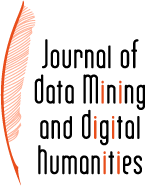 |
Emmanuel van Elverdinghe - Recurrent Pattern Modelling in a Corpus of Armenian Manuscript Colophons
jdmdh:1401 - Journal of Data Mining & Digital Humanities, 11 janvier 2018, Numéro spécial sur le traitement assisté par ordinateur de l‘intertextualité dans les langues anciennes - https://doi.org/10.46298/jdmdh.1401
Colophons of Armenian manuscripts are replete with yet untapped riches. Formulae are not the least among them: these recurrent stereotypical patterns conceal many clues as to the schools and networks of production and diffusion of books in Armenian communities. This paper proposes a methodology for exploiting these sources, as elaborated in the framework of a PhD research project about Armenian colophon formulae. Firstly, the reader is briefly introduced to the corpus of Armenian colophons and then, to the purposes of our project. In the third place, we describe our methodology, relying on lemmatization and modelling of patterns into automata. Fourthly and finally, the whole process is illustrated by a basic case study, the occasion of which is taken to outline the kind of results that can be achieved by combining this methodology with a philologico-historical approach to colophons.
